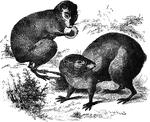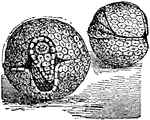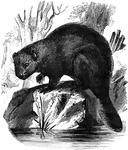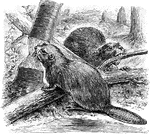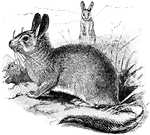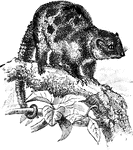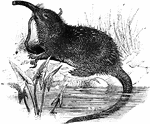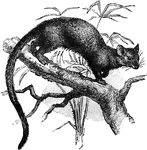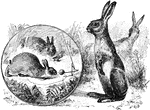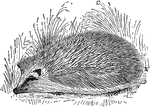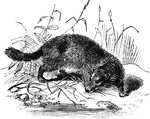
Black Agouti
"Is considerably smaller than the common agouti, being about the size of a rabbit, while the species…

Porcupine Anteater
"It is a slow, dull, nocturnal animal, but exhibits a wonderful activity in digging, for which its powerful…
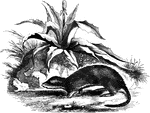
Swinder's Aulacoe
"This is the size of a rabbit, of a brown color, with short legs and a long body, covered with short…
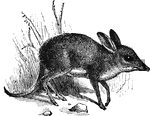
Bandicoot
Notable for the disproportionate development of hind limbs and the reduction of the lateral digits of…
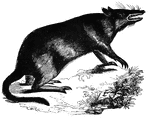
Long Nosed Bandicoot
"Having a long head, with the upper part of the snout much prolonged: the tail is long and tapering;…

Scalpriform, Left Lower Incisor of a Beaver
Close-up illustration of scalpriform incisor of a beaver. It is "chisel-shaped; having the character…
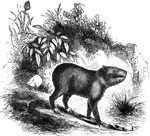
Capybara
"It measures three feet from muzzle to the hinder part, but has no tail. The general shape of the body…
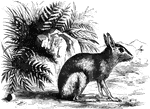
Patagonian Cavy
"This is a burrowing animal, but sometimes avails itself of the excavations of the viscacha for a retreat."…
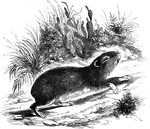
Rock Cavy
"In this animal, the fur is soft, its general hue gray, tinted with rufous on the hinder art of the…

Brazilian Ceromys
"It is of a deep brown color above, paler on the flanks and cheeks, and whitish beneath; it is without…

Chinchilla
"Chinchilla is a genus of South American herbivorous rodents very closely allied to the rabbit, which…

Chinchilla
A small south American rodent quadruped of the genus Chinchilla, especially C. lanigera; a pika-squirrel.…
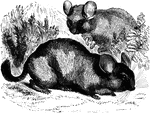
Chinchillas
A squirrel-like rodent common to parts of South America and usually raised to its soft, pale gray fur.
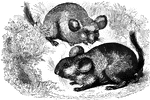
Chinchillas
"It is of a grayish color, and sufficiently long for spinning. The little animal which is produces it…
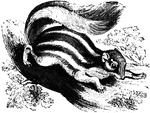
American Chipmunk
Tamia Striata. "It is about five inches long, and of a fawn-color above, striped wth five brown and…
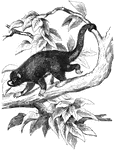
Couiy
"Of this genus there are several species, all of which are clmbers, with a prehensile tail partly naked.…
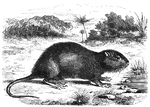
Coypu
"This has ears of moderate size; fur long; upper parts of the snimal penciled with dusky and brownish-yellow…
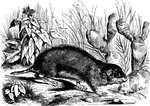
Brazilian Ctenomys
"Is reddish above and white beneath; body six inches long, and tail two inches. It lives near water,…
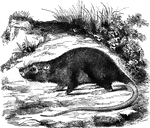
Dactylomys
"It is more than nine inches from the muzzle to the insertion of the tail, and the tail itself is twelve…
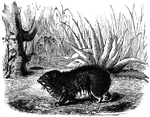
Syrian Daman
"Is a foot long, of a brownish gray color above and white below. The skin without the hair is of a blackish…

Banded Ant Eater
"It is about ten inches long, of a tawny color, marked with transverse bands of black and white. The…
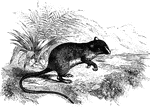
Gerbil
"They are somewhat rat-like in appearance, but are noted for the elegance of their forms, the length…

Long-Fronted Gerbil
"Gerbillus longifrons. GERBILLUS. The typical and leading genus of Gerbillinae, containing upward of…
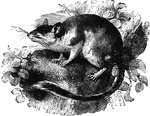
Glis
"Described as being five inches long, with a tail four inches, and found in Greece, Italy, Spain, France,…
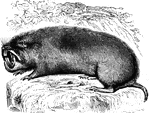
Gopher
"It is of a pale yellowish-gray, seven and a half inches long, and derives its common name from its…
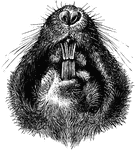
Plains Pocket Gopher
"Under Side of Head of Geomys bursarius, showing entrance of external cheek-pouches and sulcate superior…
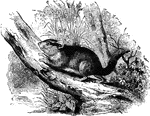
Cape Graphiure
"Resembles the dormouse in appearance; it is of a grayish-brown, and of the size of the Lerot; its habits…
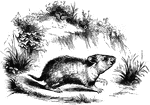
Hamster
It is a reddish-brown color above and black below, but variations in color ar enot uncommon. The length…
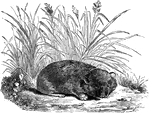
Calling Hare
"It has a head loner than usual with hares, and thickly covered with cur, even the tip of the nose;…
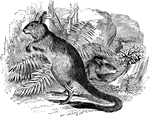
Cape Helamys
"These animals have a large head, a long body, long pointed ears, large eyes, and long hind-legs used…
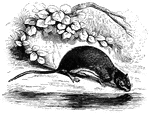
White Bellied Hydromys
Has a chestnut color above and a white belly. They are found along the Swan River.
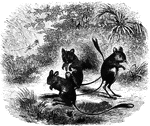
Jerboas
"These animals have the head large and rabbit-like; the ears long and pointed; the eyes full; the tail…

Jerboas
"These animals have the head large and rabbit-like; the ears long and pointed; the eyes full; the tail…
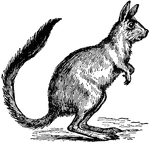
Jumping Hare
The Jumping Hare, also known as the Springhaas, is a large African jerboa (Pedetes caffer). In size,…
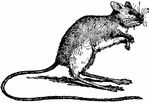
Jumping Mouse
The Jumping Mouse (Zapus hudsonius) is a N. American, jerboa-like mouse, with long hind legs, a very…
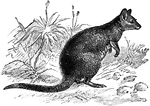
Papuan Kangaroo
They are small size and somber coloration, with the hair on the nape antrorse, the tail naked and scaly…
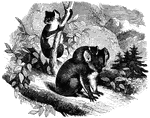
Koala
"Large as a moderate sized dog. It has long, thick and rather course fur, of an ashy-gray color; its…
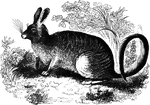
Cuvier's Lagotis
"Its general appearance reminds one of the hare. The body above is yellow, with a faint tinge of green…

Lemming
Lemmings are small rodents, usually found in or near the Arctic, in tundra biomes. Together with the…
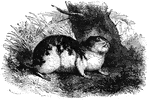
Lapland Lemming
"Of the Lemming genus, the Lapland Lemming is the most celebrated which is confined to Lapland and Norway.…

Tawny Lemming
"Is smaller than its proceeding, and resembles the Lapland Lemming. It is found about latitude 56 degrees…
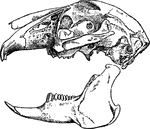
Lepus Timidus
"Terrestril Rodents, with imperfect clavicles, elongated hind limbs, short recurved tail, and long ears.…
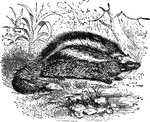
Lophiomys Imhausi
"This very extraordinary species from north-east Africa differs from all other rodents in the peculiar…

